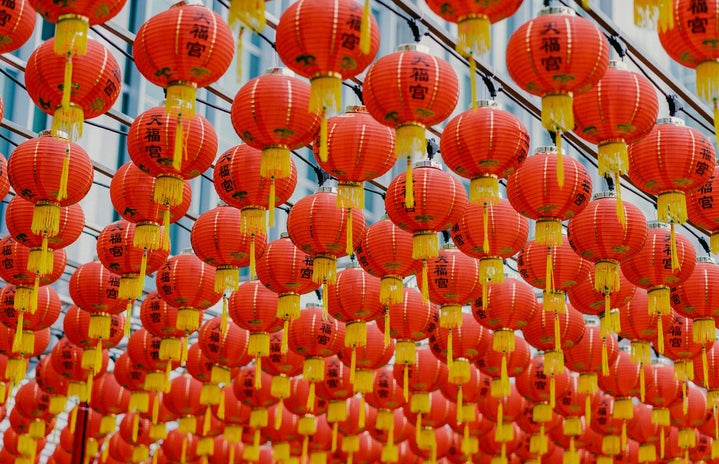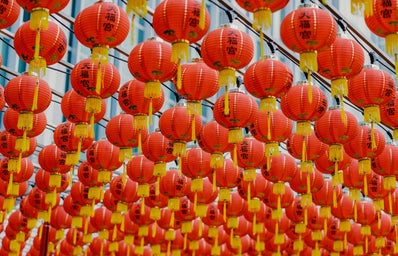This article was originally published on Priscilla Kim Ong’s Blog and has been edited and re-shared by the author to be published on Her Campus.
Nearly every night last week I went to bed listening to the bangs and cracks of fireworks and firecrackers being set off. Although the first boom is always startling, the dazzling lights in the sky are no random affair this time of year. In San Francisco, Lunar New Year (LNY) celebrations are made well known, mainly by the robust Chinese American community. About an hour southeast of San Francisco lies San Jose, home to the largest Vietnamese American population who also celebrate LNY with pride. In the US and throughout the West, LNY has commonly been renamed as “Chinese New Year,” and sometimes acknowledged as “Vietnamese New Year,” to differentiate the ethnic or cultural groups that celebrate it. Though in China, people typically do not call it “Chinese New Year” but rather simply New Year, Lunar New Year or chūn jié 春节, meaning Spring Festival.
There are many other groups that celebrate LNY, such as people in Korea, Singapore and Tibet, which is why it is necessary to refer to it as Lunar New Year when broadly speaking. This is not to say that it should never be called “Chinese New Year,” but one should be more mindful of their audience. For example, when talking to people who do not celebrate or know much about LNY, calling it “Chinese New Year” when you are actually referring to LNY in general excludes the other groups of people that celebrate it. If referring to the traditional dress, ao dai, that many Vietnamese people wear during LNY, it would be appropriate to differentiate Vietnamese Lunar New Year from LNY as a whole. It is important to recognize that not only do several Asian countries recognize LNY as a national holiday, but that the immigrants of various Asian ethnic groups celebrate LNY in their own ways, and some don’t celebrate at all.
I’ve grown up celebrating Tết, or Vietnamese Lunar New Year, in the US. My mom was raised in Vietnam and maintained many Vietnamese customs and traditions when she moved to the US, including Tết. Throughout her life, like many other Khmer-Krom people, she always preserved her Khmer culture and identity, despite the Vietnamese cultural dominance that surrounded her during her youth. Naturally, we also celebrated Khmer New Year, or Thai, Laos, Cambodian (TLC) New Year, every April. TLC is distinct from LNY, as it occurs later and involves different culture-specific customs.
As a first generation Khmer-Krom American, I have nurtured the contrasting cultural aspects of Khmer culture and Vietnamese culture, from learning to speak both languages, to going to both Khmer Theravada temples and Vietnamese Mahayana temples. However, many people of the Khmer-Krom diaspora do not relate. When Vietnam took control of our homeland of Kampuchea-Krom in 1949, millions of indigenous Khmer-Krom communities were forced to assimilate into Vietnamese culture. Foreign powers, such as Vietnam and Thailand, attempted to seize Cambodian territories for generations prior, particularly those living near borders and in the Mekong area. Their respective cultures were imposed on the lifestyles of Khmer people, inevitably influencing and reshaping the cultures of these communities. Khmer-Krom people resisted Vietnamese acculturation as much as they safely could, speaking Khmer at home and keeping their culture alive together. Ultimately, creating a new culture for Khmer-Krom people has at times, separated them from Khmer communities and Vietnamese communities. Thus leaving it up to each family and individual to decide how they identified themselves in relation to their cultures.
My family continued to balance the two cultures after immigrating to the US. In my upbringing, I often found that my mom, big brother and I, were more involved with Vietnamese-American communities, which I partly attribute to her profession in the Vietnamese dominated nail industry. I had more exposure to Vietnamese people, language, food, temple and even supermarkets than to their Khmer counterparts, which is the reason celebrating Vietnamese LNY was normal in my life. However, there are many Khmer-Krom people that had the opposite experiences and connected more to Khmer communities and culture.
Many Khmer-Krom people that were born and raised in Kampuchea Krom under the Vietnamese Government remained strictly aligned with Khmer culture, despite their comprehensive knowledge of Vietnamese customs and their ability to speak the language. Needless to say, this would be passed on to their children. In an interview with two related Khmer-Krom American college students from San Jose, California, Chantrea and Sovanny Thach explained how they celebrate Khmer and TLC New Year “because of [their] parents,” whereas they simply “acknowledge and appreciate Lunar New Year.” They are particularly exposed to Tết, not so much from their own families, but because of their Vietnamese-American friends and the large Vietnamese community in their area.
This contrast in cultural identity and acceptance is common from family to family in the Khmer-Krom community, which becomes even more complex among younger generations living outside of Kampuchea Krom. Throughout my life, I struggled with grasping these two distinct cultures and understanding where I fit. The beauty of being Khmer-Krom is that while we share a unique history that connects all of us, we have the power to choose what it means for each one of us.



